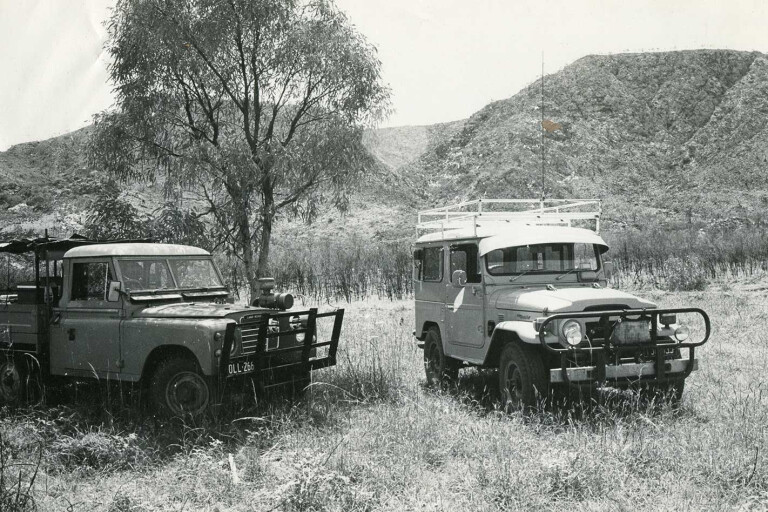
THIESS Brothers, an earth-moving construction firm, introduced Toyota 4WDs into Australia in 1958.
The first batch was used in the construction of the Snowy Mountains Scheme where Thiess was one of the principal contractors. It also had a contract to remove overburden and ore from the massive Black Rock open-cast mine at Mount Isa Mines, and introduced Toyotas to the Isa and the Gulf country when I worked in the pit.
Mining and Toyotas were cheese and wine, but, not to be outdone, the grazing industry replaced ageing ex-military Jeeps, Willys Jeeps and British Land Rovers as quickly as they could afford it with the more powerful Toyotas. However, there was much scepticism in the bush about the Toyota – “Jap crap” according to some.
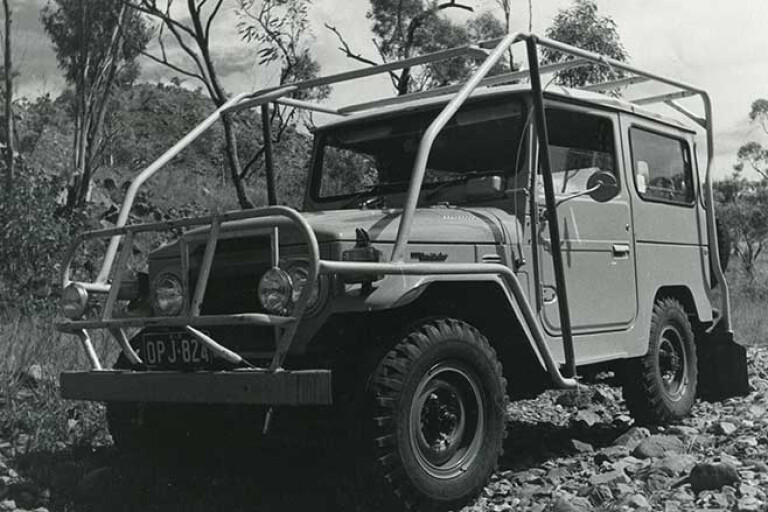
How anyone could possibly believe that a Japanese-made vehicle could compete in the bush with the time-proven British Land Rover was beyond the imagination of most bushmen. The Land Rover was introduced into this country in 1948. It was an instant success, having no competition, apart from few clapped-out WW2 ex-military Jeeps. To many, the Land Rover was the pinnacle of British engineering; but that was to change.
By the mid-seventies, the Toyota had all but replaced the Land Rover. Only wannabee city-based ‘bushmen’ drove Land Rovers. The drivers could be identified by ex-army slouch hats that were clipped to one side, wore surplus military-issue clothing, sole-ribbed or ex-military desert boots, and carried big Puma Hunter knives on their belts, arguably the first survival blade. Land Rover drivers smoked curved pipes and when you met a mob in a bush pub like Gregory Downs or Kajabbi, the smoke and smell was enough to make one puke.
HAMBURGER BULL
ON the vast cattle stations, though, things were changing when the US market demanded hamburger meat and the best burger meat comes from bulls. Yes, you read that correctly – bulls. Now it so happened that the highest numbers of shorthorn Hereford bulls on the planet roamed wild across the Cape York Peninsula, the Top End of the Northern Territory and the Kimberley, on stations that had been neglected for years due to the lack of sales, distance and costs. But suddenly they were tossed a lifeline, someone wanted bulls and they had heaps; big ugly bastards with huge horns and bad tempers.
Bull-catching created a whole new career for ringers. Horses where first used to knock bulls off their feet. The ringer leaped off his horse, grabbed the bull by the tail and when it turned on him, it would be off balance. In that spilt second the ringer twisted its tail and the bull fell on the ground. A strap carried about the ringer’s waist was then used to secure the hind legs: “Easy as, ’ey ...”
But horses and sometimes ringers were gored and killed. There had to be a better way.
LIMITED EDITION: Jeep Wrangler Unlimited Willys
The answer lay in old Toyota ‘shorties’. They were resurrected, stripped-down and mechanically rebuilt, fitted with a sturdy steel bullbar – now you know where the name comes from – the sides enforced with strong steel plates and rails that connected to the bullbar which sat well forward to protect the radiator from bull horns and scrub.
Not that the Toyota shorty had the market covered; a bloke in Katherine used a Range Rover, but when it was opened up like a sardine can by a bull he stopped using it. The Austin Champ was another vehicle used as were Willys Jeeps, Land Rovers and others, though the drivers preferred Toyota.
“If it broke down, you could always fix it and get home,” said an old mate. “It was all busted-arse gear to start with. We broke a lot of engine mounts chasing bloody bulls through the scrub. And don’t talk bloody tyres to me, those money-hungry bloody bosses used to haunt the tyre shops begging for old tyres, which were then fitted to the bull catchers. Talk about changing flats or blown tyres on the job. Bloody hell, don’t remind me.”
CLASSIC: BJ/FJ Cruiser
The FJ25 short-wheelbase Toyota was well-suited for the job and from the mid-1960s on they underwent all sorts of modifications. A good bull-catching shorty had a 155hp petrol engine and a three-speed gearbox. Others had multi-throat Stromberg carburettors, and later five-speed gearboxes, for extra pick-up and power. But it was generally recognised that the three-speed gearbox was ideal. Some mechanically-minded drivers even dropped Chevy V8s into their shorty.
“They went like the blazes,” said old mate. “But we did not really need that much power.”
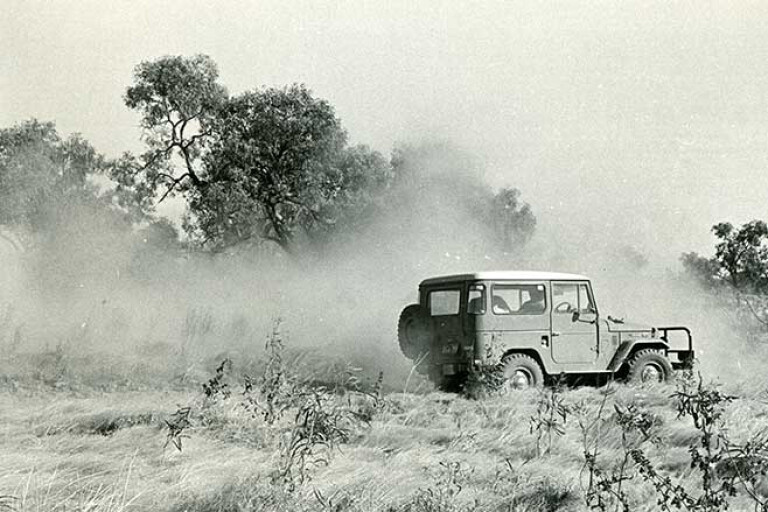
The three-speed was favoured because the driver could concentrate on the bull instead of having to change gears. It enabled the driver to change gears with a simple forward and rearwards movement, handy when you were stuck in a gully or mud. The second gear was ideal for running the bull until it tired.
The bullbar was used to knock the bull over and, with the vehicle almost parked on top of the unfortunate bovine, it was ‘easy’ to tie the hind legs and immobilise it. Next, the bull was tied to a strong tree trunk by the horns and the leg rope released. It was later picked up with a truck – generally an old 4WD ex-army Blitz – but if the country was too rough for it, a trayback Toyota did the job.
There were various methods of loading bulls onto trucks. One was to winch or pull it partly up a tree and back the trayback under it. The other was to use a purpose-built truck slide and either winch the animal on the truck bed or pull it in with the bull catcher, the same method as is used today.
Bulls were dehorned at the spot or had the horn tips removed to stop them from killing each other when yarded. There is nothing meaner than a mad scrub bull when yarded with a mob of cattle and calves. When one goes berserk they mainly kill cows and calves. If it can’t be separated quickly, the only other option is to shoot it …
A very expensive problem that faced the bull catchers was the fact that they drove clapped-out vehicles. For most contractors the cost of maintenance was outstripping the profits. Spares were carried and most drivers were outstanding bush mechanics, but fixing a vehicle in the bush meant downtime for others on the job.
NEW THINKING
A FEW contractors bit the bullet and purchased brand-new FJ25s that cost more than $3000, stripped them down and rebuilt them as bull catchers. That was enough to make grown men cry, but the new vehicles paid for themselves in a month if bulls were caught and, best of all, they did not have any major breakdowns for several seasons.
The bull catcher kept evolving; someone, probably an American cowboy who had immigrated to Australia and the Top End, constructed a horse saddle seat next to the driver, or in the rear, from where he lassoed bulls from his lofty height. This worked well until the driver hit an anthill or a washout. Pub legend has it that one roper fell forward when the driver hit a log hidden in tall grass. His head went through the glove-box opening and the only way they could extract him was to grease his head and ears and pull hard …
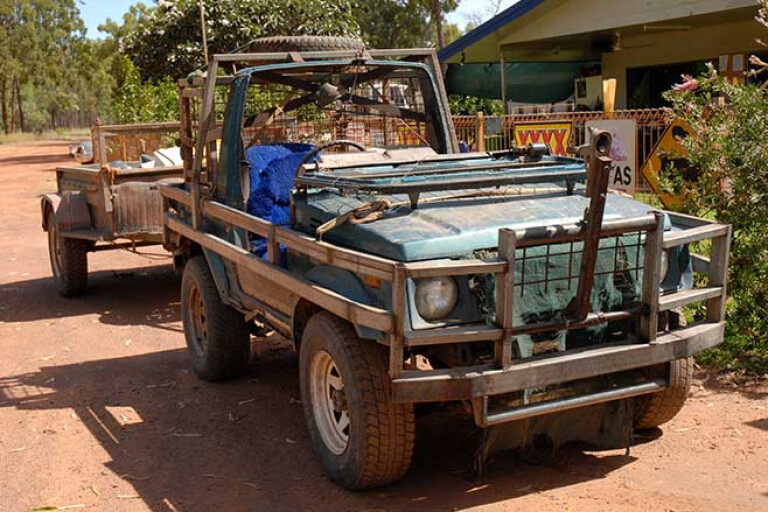
The freedom, adventure and lifestyle of bull catching, especially buffalo, attracted adventurers from all over the world. There were Americans, Germans, Dutch and English in the mix of local Aborigines.
Next came pole catching, where a long bamboo pole with a rope noose on the end was placed over the bull’s head. It took a great deal of skill and strength because of the unwieldy long-pole weight. You also had to have complete trust in the driver, even though the catcher was supported by a purpose-built rail where the passenger seat normally is. Once the noose was over the bull’s neck, the brakes were slowly applied and the bull knocked off his feet with a tail twist, before being tied and left for the truck to collect it.
Later, some say after the African movie Hatari starring John Wayne, a seat was fixed on the bullbar. The catcher, a very brave man indeed, would sit on it and use a bamboo pole and noose to snare bulls. But some Territory old timers claim that the Hatari idea was already in use in the Top End before the movie was made and that Hollywood got the idea from us. Who knows?
HISTORY LESSON: Homage to the FJ Cruiser
It had inherent dangers, apart from being catapulted from the seat as seat belts had not yet been invented. Old mate, Indigenous catcher Matt Sullivan, told me he had a big-horned buffalo lassoed. When the driver slowed down it gave the bull a bit of space and he managed to get his horns under the Toyota and tip it over on its side. Matt was trapped under the vehicle with a broken leg.
“That bloody bull looked at me and snorted snot all over me before stepping out of the rope and running away,” said Matt, who sported the legacy of the encounter with a permanent limp. Other catchers, including Sonny Smeaton, who it was said was as mad as a buffalo bull, were not too lucky and were killed on the job.
Rollovers were common, as was hitting deep buffalo and pig wallows, anthills and logs, all demanding a heavy toll on vehicles, catchers and drivers.
BUSH ENGINEERS
BUSH innovation created the natural evolution of the bull catcher, and it is legendary when northern cattlemen gather about campfires and in bush pubs. Like the horse that went before it, the bull catcher’s vehicle is now part of life in the outback.
A Yank, Kel Carrick, came up with the idea to fit a contraption on the bullbar that was fitted with a swinging arm that was swung over the bull’s neck instead of knocking him over. You just drove alongside the bull and placed the arm over its neck and gave it a hug. Once secured, the bull wore himself out trying to tip the vehicle over. Buffalo were sometimes strong enough to do that.
What a great idea, it saved on labour and prevented bruising of valuable meat, while it was much easier on the driver and the animal. Thus, the bionic arm was born. It has undergone several innovations from the original, but almost every bull catcher’s vehicle used today is fitted with a bionic arm.
THE BUFFALO
OUT on the flood plains, east from Darwin, grazed untold riches in the form of buffalo that were so thick that “they are like cloud shadows,” wrote a visiting journalist. While they had been shot for skins for decades, the demand for burger meat and the German game market attracted the bull catchers. They used the same vehicles and methods as they did for cattle.
At about this time a new innovation were portable steel yards, which were set up in strategic places and had ‘wings’ consisting of two-metre-high hessian walls that guided mobs of cattle or buffalo into the yards.
The bovines won’t go through the ‘wall’ that confronts them, though getting them in the yard is not always easy, as there is always one that breaks and turns back towards the bull catchers, sometimes taking the whole mob with it. While cattle are easier to push into yards, buffalo are much harder to control.
Heli-mustering was introduced about this time and it made the job of mustering whole herds much easier. They would be driven near the yard where waiting bull catchers guided them into the hessian wings, almost hidden in clouds of dust.
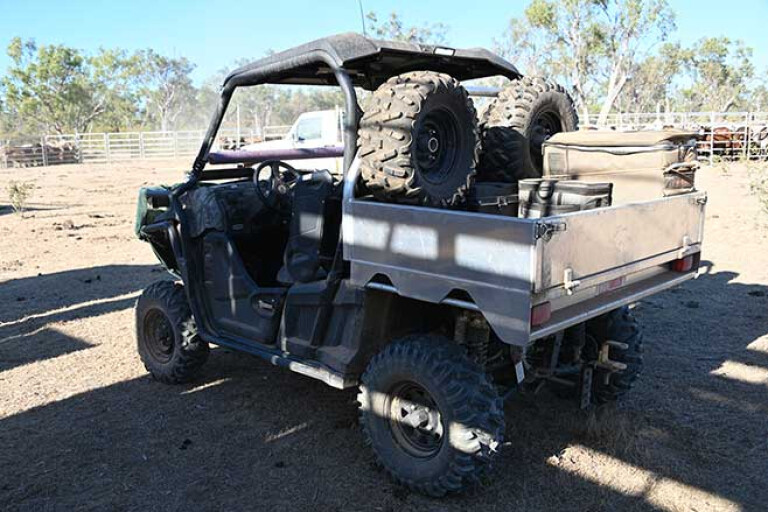
“You have to line the bull catchers up like a single unit and push the buffalo forward. If there is a gap between the vehicles, a bull will rush through and get away,” said Jay Pendarvis, an American who owned Mudginberri and Mummalary Stations and a buffalo-meat export abattoir on Magela Creek in the 1980s.
I experienced firsthand buffalo musters on Mudginberri, Mummalary and Goodparla Stations, where I enjoyed exhilarating rides in bull catchers, hanging on for dear life with one hand and a Nikon camera in the other. What fun that was …
The three stations became part of Kakadu National Park when they were forcibly taken from the owners in the 1980s.
But the end of a way of life began when the BTEC (tuberculosis) program commenced in the 1970s. Whole herds of cattle and buffalo were destroyed and left as carrion in the bush and on the plains. By the mid-1980s it had marked the end of bull catching and mustering wild scrub cattle, ending the buffalo and scrub-bull meat export industry and the closure of abattoirs that employed hundreds of people. All were tossed on the scrap heap by the Federal Government.
I witnessed the slaughter of more than 30,000 buffalo in Kakadu and bid goodbye to good mates that worked at the Mudginberri abattoir near Jabiru. It broke the hearts, and for some their will, of good people employed in the meat industry.
Station owners and people who worked with cattle and buffalo were in distress, not only by the waste of it all but that it also marked the final chapter in an era of wild bulls and men. It was the end of a frontier and it took years to recover. The success of the TB program is still being debated when cattlemen meet at bush races, while old-time buffalo hunters at the Humpty Doo and Howard Springs pubs reminisce of times past roaming the buffalo plains of Marakai, the Mary, Wildman and Alligator Rivers.
FLYING MUSTERS
THESE days stations operate under very different conditions, with Brahman cattle dominating and, instead of free grazing, fences now control their movements. On the Marakai Plains out of Darwin domestic buffalo graze on rich grasses, though numbers are low. Feral buffalo are controlled by contract shooting in national parks and in Arnhem Land, where the last wild herds roam.
Nowadays helicopters are used to round-up distant mobs of cattle, or buffalo, and drive them to portable holding yards where ringers in bull catchers take over and yard the tired animals. This has now been highly refined with buggies and quad bikes doing the job, though some stations continue to use horses when working calm cattle.

But in the wild backblocks of many properties, scrub bulls that have never seen a human are still being hunted by ringers that mostly use quad bikes to catch them. They often work alone, marking the tied-up bull location with a GPS, or their memory, to pick up the bulls later with a truck.
Buffalo are more dangerous, and the safety features of Toyota bull catchers continue to dominate the final muster. Most are now based on the longer model 70 long chassis .These days on a busy cattle station you will often see a combination of ringers on horses, bull catchers, quads, buggies and hovering helicopters, when cattle are mustered on the big runs of the outback.
In the bush Toyota bull catchers still rule, as ringers round up cranky scrub bulls. Others use quads, an even more dangerous job, but as the bush saying goes “most ringers are as mad as the bloody bulls, ’ey …”
FACT BOX
THE Toyota LandCruiser FJ25 was available in soft, metal and fibreglass hardtop configuration. Originally powered by a 3.8-litre six-cylinder petrol engine, it was designed as a basic workhorse. It was only available in green colour until 1972 when beige was introduced. Later a 3.4-litre four-cycinder diesel engine was added and a five-speed gearbox with low- and high-range capability.
It was very popular, though it gave a hard ride and was prone to rollovers if cornered too hard or driven on steep hills. Bull catchers preferred the diesel engine, but many petrol engines did sterling service in the bush. It was discontinued in its original form in 2002.

COMMENTS